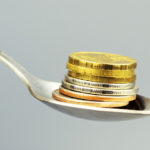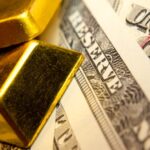5 Tips for Collectible Investing
THANK YOU FOR POSTING A REVIEW!
Your review was sent successfully and is now waiting for our staff to publish it.
(December 1, 2017 - by Kayleigh Kulp)
Although not liquid, these investments can be enjoyable and maybe profitable.
Pablo Solomon’s parents supplemented their income by buying, selling and trading collectibles found at yard and estate sales, and thrift stores, while living in some of Houston’s poorest neighborhoods.
Now he and his wife, Beverly, still enjoy trading collectibles and using them in their Texas design firm.
"My wife and I put money into art and collectibles and are now on the proverbial easy street," he says.
Art and collectibles can be an interesting way for investors to diversify their portfolios. The U.S. rare coin market alone is worth $4 billion, according to the Professional Numismatists Guild.
"The current low-interest rate environment makes a non-interest-bearing asset like art more attractive to own," says Eric Smith, CEO and owner of Redwood Media Group, which produces seven fine art fairs across the United States. "The art market has become an island of stability and the global outlook for 2017 was positive as far as art buying is concerned."
But many investment and collector professionals say unless you are an expert in your chosen item, it’s best to purchase items to enjoy, rather than to make a profit.
"Not all [collectibles] have gone up in value and some have gone down," says Ilena Di Toro, owner of the collectibles website, JustMoviePosters.com, citing as an example Elvis memorabilia, which is on the decline because Elvis’ original fans are now in their 70s and 80s.
So before you rush to scout desirable paintings, coins, sculptures or the next hot collectible, heed the following expert advice.
Start small. Don’t go out and spend your life savings on one piece of art. "Pieces priced at or below $10,000 are increasingly popular this year, with many people looking to fill the walls of a newly bought property or as part of a renovation project," Smith says.
Determine an item’s value carefully. Each collectible – whether fine art, antiques, or other items – is its own animal that requires careful study and research.
By sticking with collectibles made of silver and gold, you may still be able to recoup some of your investment in the event the product value itself declines, says Jonathan Greenstein, owner of J. Greenstein and Co., whose house auction collectible menorahs go for up to $1 million each.
Buy it cheap. Auction prices are typically higher than you would net if you have to sell, Solomon says, so buying cheap is the key to making money at any time. But beware of prices that seems too good to be true, since no reputable dealer will sell something substantially under market value, says BARRY STUPPLER, president of the Professional Numismatists Guild.
Don’t expect to sell anytime soon. Unlike many stocks and bonds, art and collectibles are highly illiquid, says Robert R. Johnson, president and CEO of the American College of Financial Services in Bryn Mawr, Pennsylvania. You may not be able to sell them right away and when you do, there can be high transaction costs.
Buy it because you love it and can afford it. Just like any investment, art and collectibles must usually be held a while to see a return, if at all.
That’s why you better love what you buy.
"There’s no one style that outranks others," Smith says. "People choose and develop their own personal taste while taking less notice or advice from the experts."
-
Goldman Sachs Says Gold’s Bullish Momentum Remains Even If The Fed Maintains Restrictive Rates By
Mint State Gold
May 1 2024





